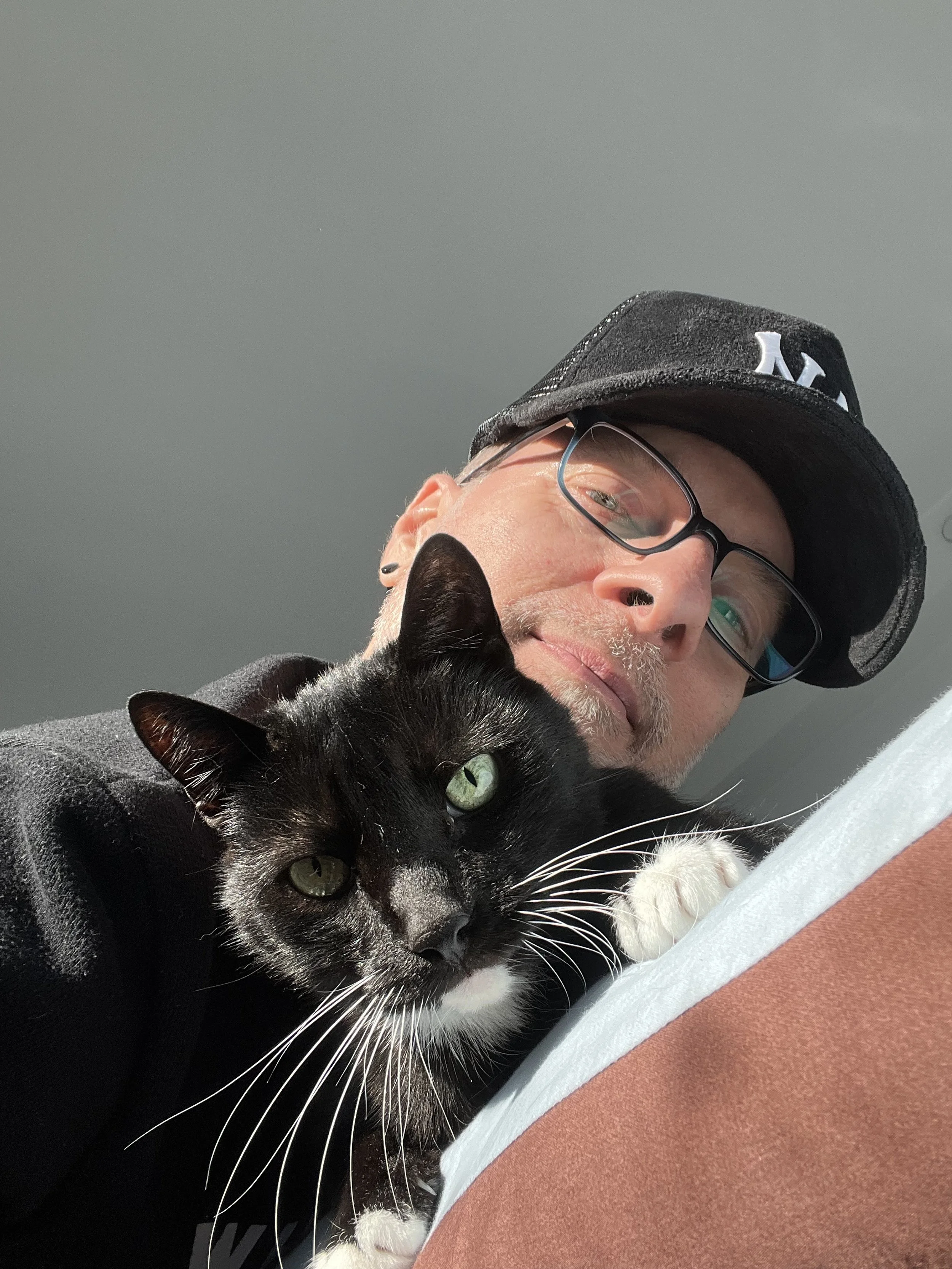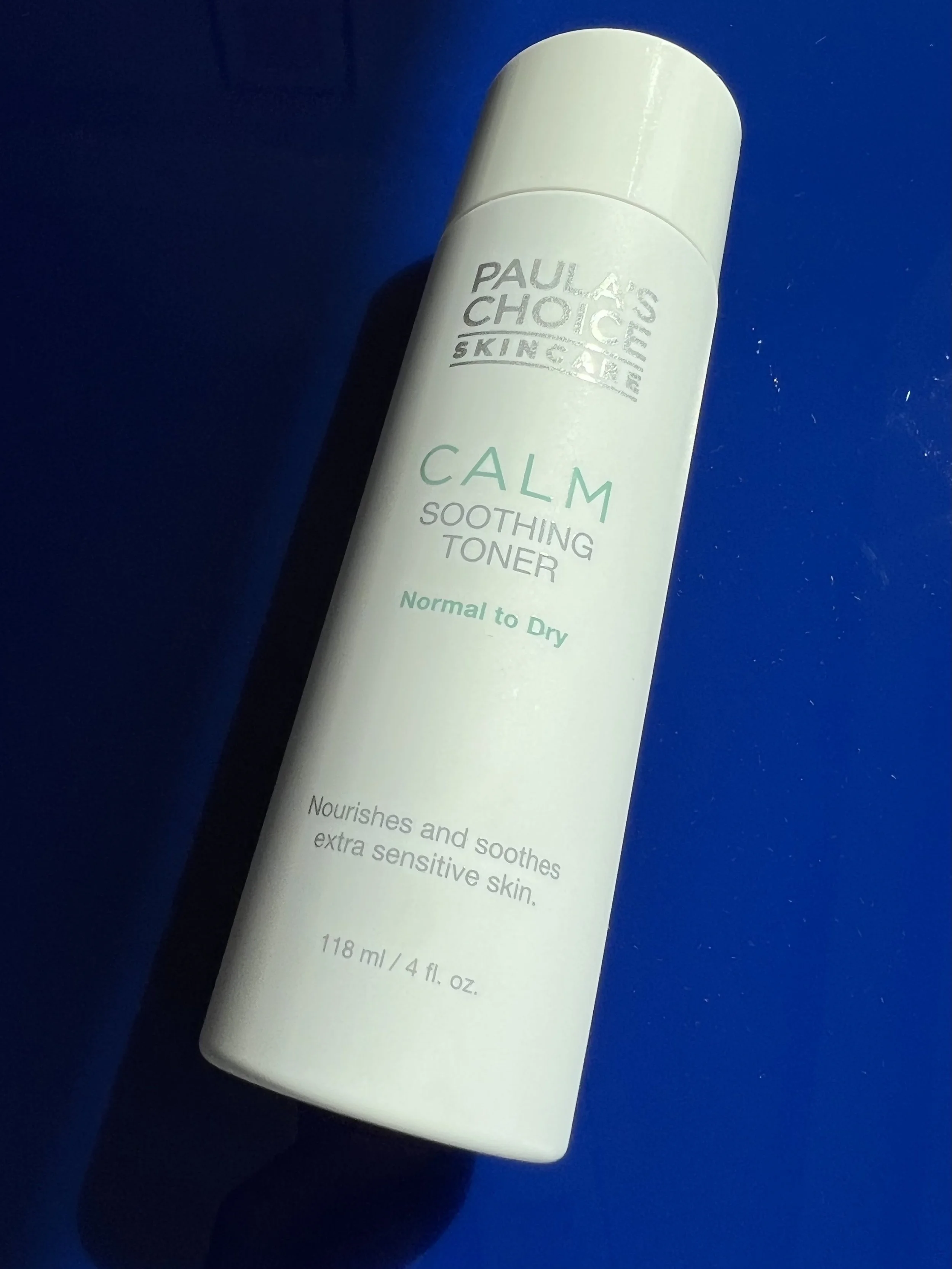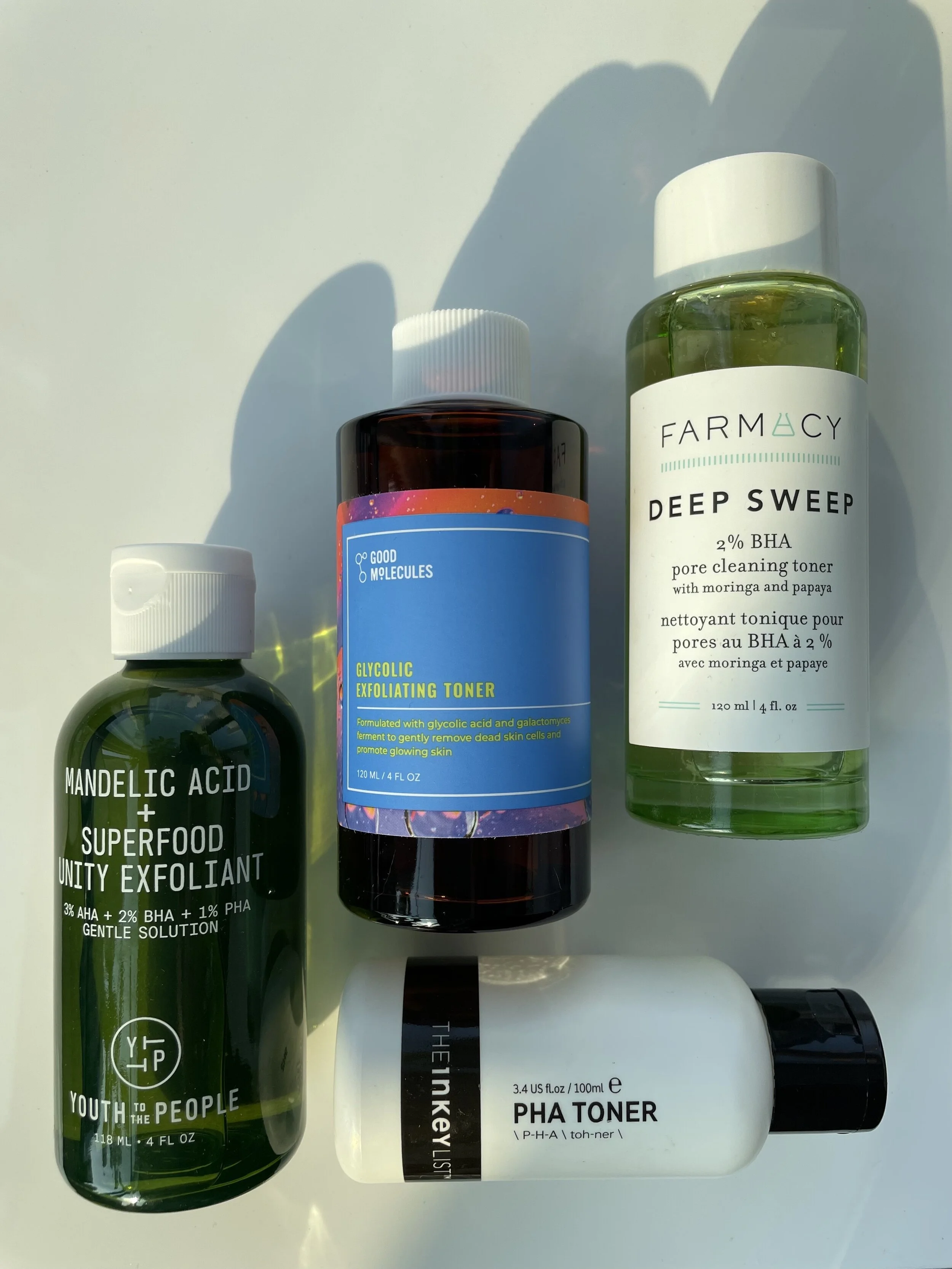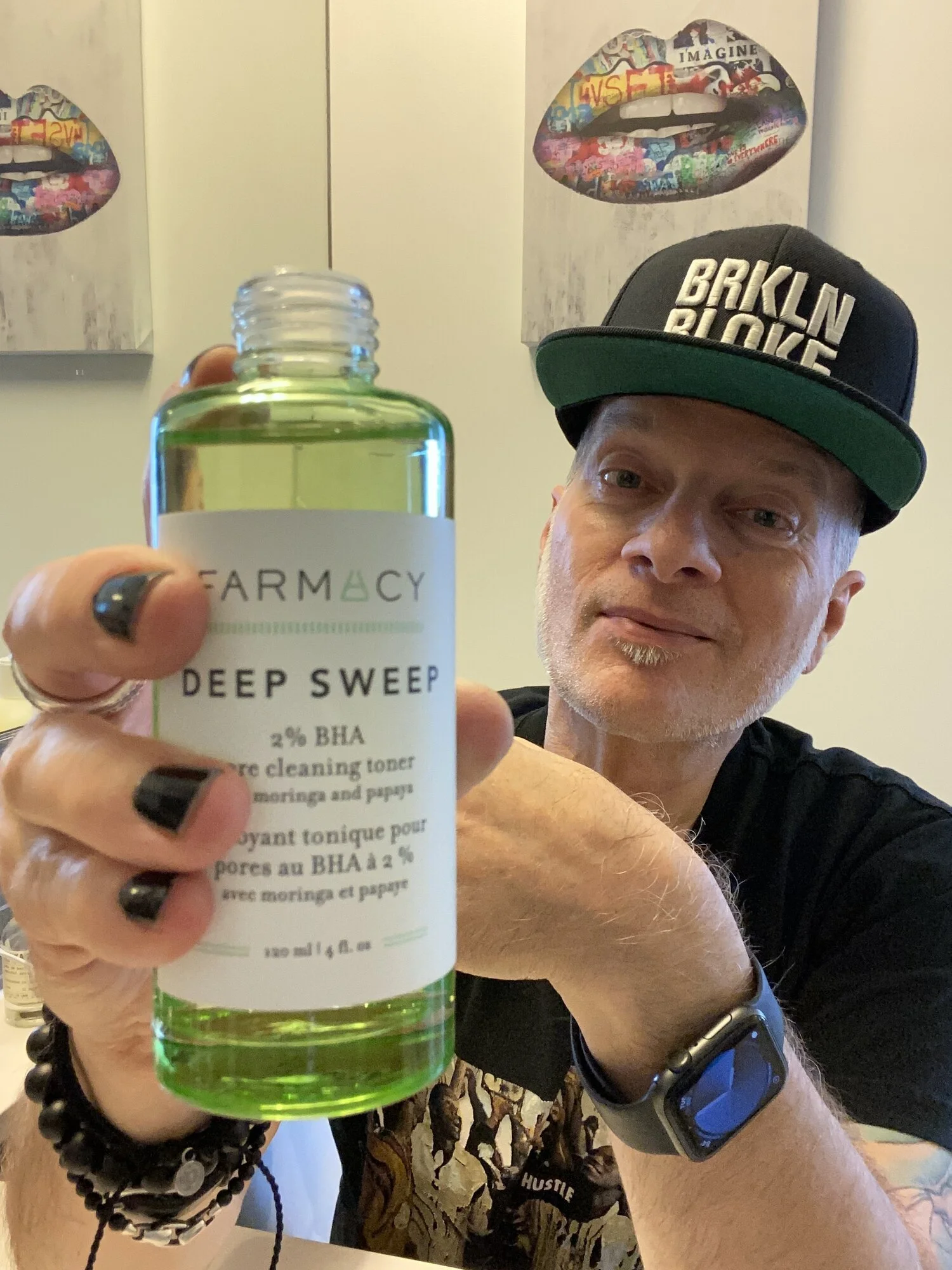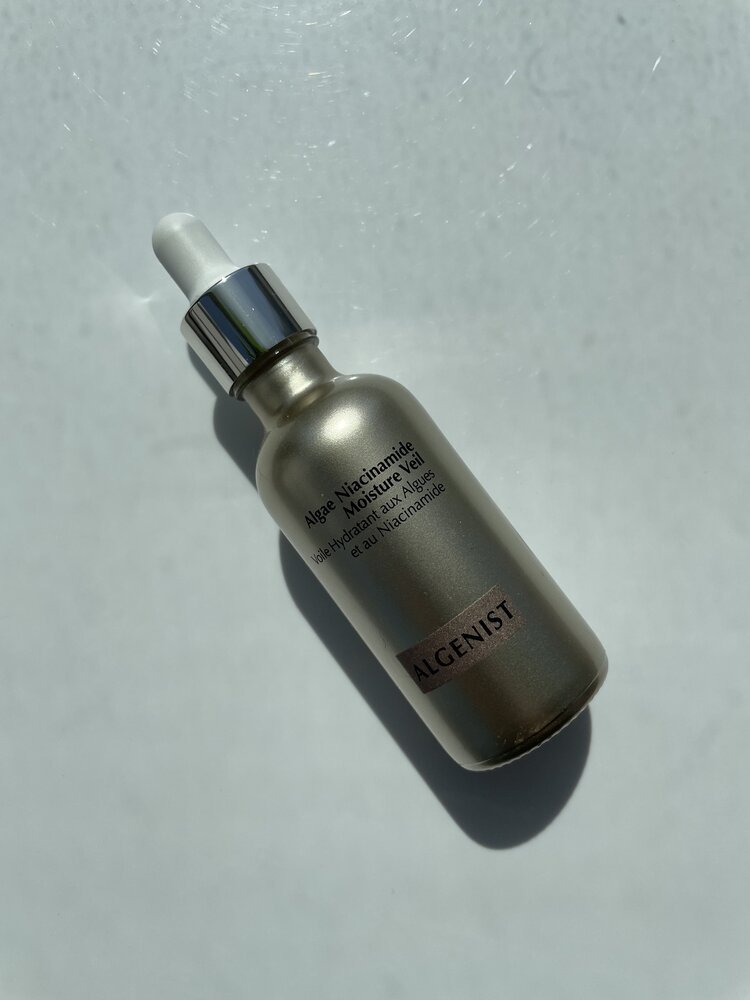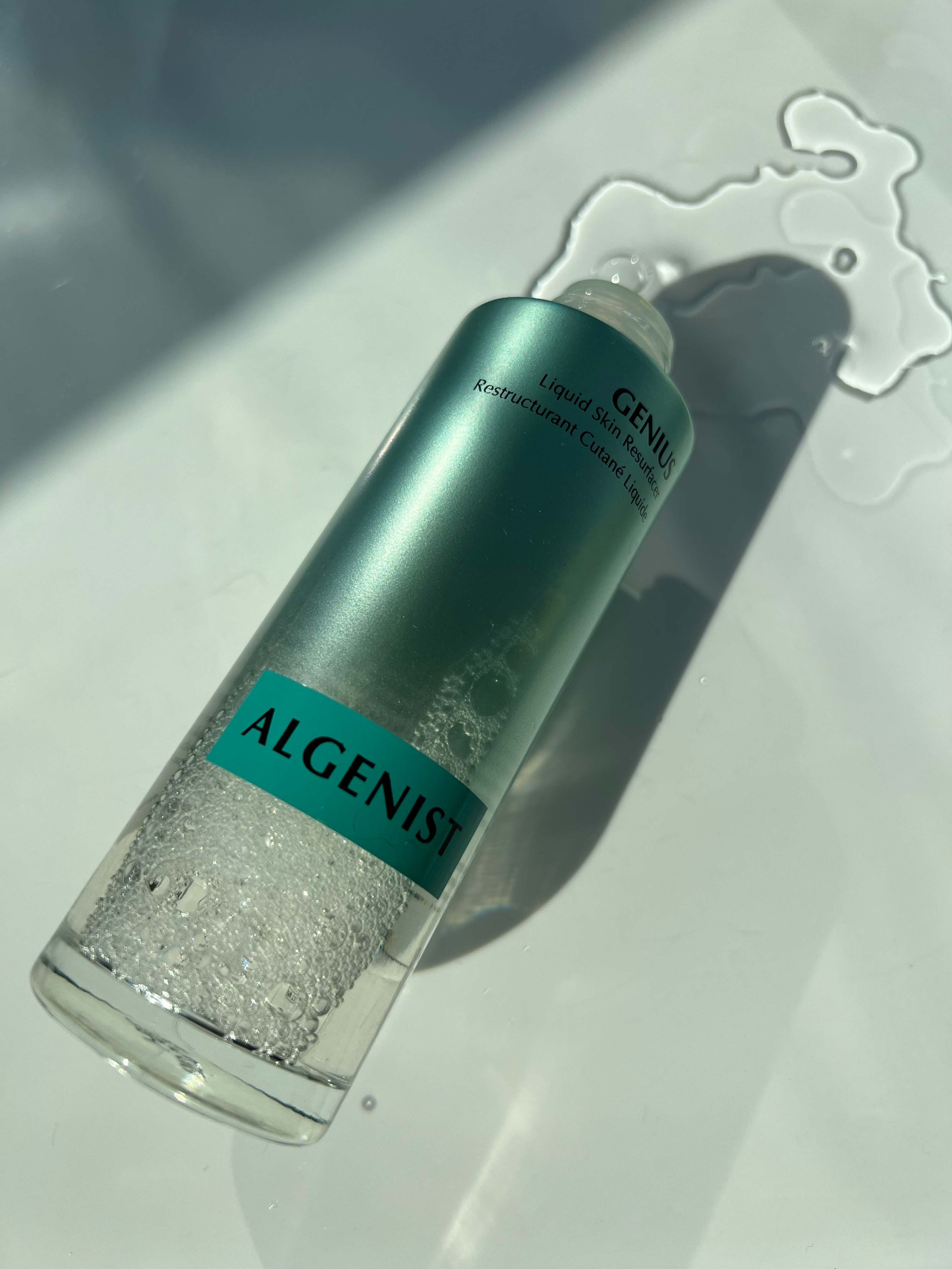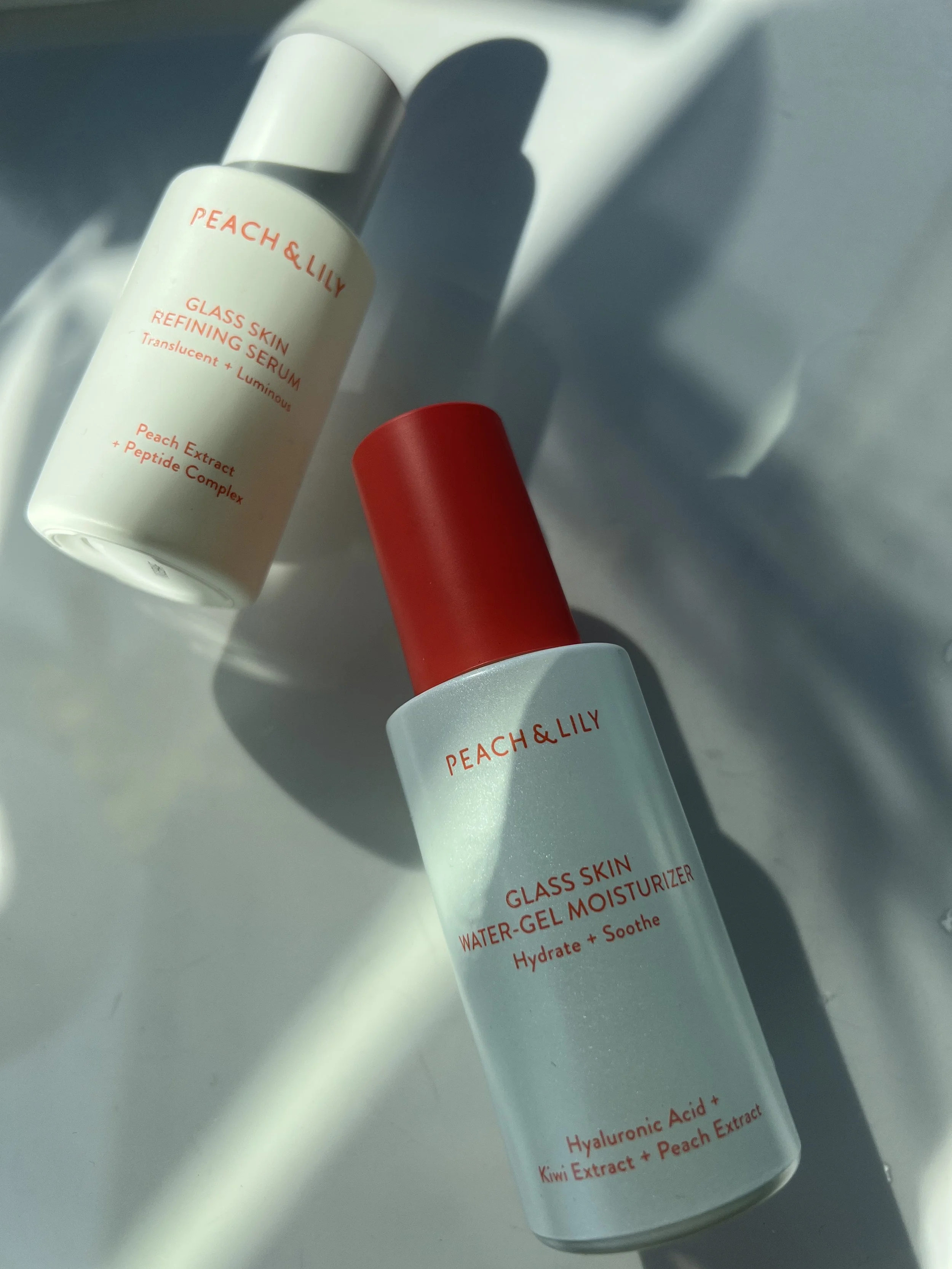PRODUCT REVIEW: ALGENIST GENIUS LIQUID SKIN RESURFACING 2% BHA TONER – BEST SALICYLIC ACID TONER FOR CLOGGED PORES, BEST BRIGHTENING TONER, HOW TO FIX DULL SKIN
ALGENIST | GENIUS LIQUID SKIN RESURFACING 2% BHA TONER
I haven’t always been into acid-powered treatment toners. But as I’ve gotten older, I find that my complexion gets dull more frequently.
And what’s the best way to fix dull skin? Acids! All kinds of acids can have a significant effect on the skin — instantly and over time.
Alpha hydroxy acids, or AHA’s like Glycolic Acid and Lactic Acid are among the most common for their ability to immediately exfoliate skin of the dead surface skin cells that dull the complexion.
The most common acid for the treatment of oily skin concerns like clogged pores is Salicylic Acid, a beta hydroxy acid, or BHA. If clogged, congested pores and excess surface oil are a concern for you, Salicylic Acid is your BFF.
And a whole class of acids called polyhydroxy acids, or PHA’s, is relatively new to skincare treatments, particularly treatment toners. What acids are PHA’s? Among the most common PHA’s are Gluconolactone and Lactobionic Acid. Like Glycolic Acid and Mandelic Acid, PHA’s like Gluconolactone are efficient exfoliating acids. Unlike their AHA sisters, they are far more gentle on the skin. They’re cropping up in more and more product INCI’s.
One of the best PHA toners is The Inkey List’s PHA Exfoliating Toner. Even though Inkey’s PHA Toner is a simple formula, it has a lot of pro-skin health goodness. It gently exfoliates, brightens, and soothes — and all that for just about $10. It’s excellent for amping up your daily routine. You can catch my review of it on the blog here.
PRODUCT REVIEW: THE INKEY LIST POLYHYDROXY ACID (PHA) GENTLE EXFOLIATING TONER – BEST PHA TONER
When it comes to using a treatment toner powered by AHA’s, BHA’s and PHA’s, the trick is striking the right balance between the level of acids, the frequency of use, and your own skin’s tolerance of strong actives.
In particular, overdoing it with harsh acids is one of the quickest ways to sensitize your skin and leave you in a skincare rut where you struggle with irritation and intolerance of actives like Vitamin C and Retinol.
I’ve been there. Having overdone it with Glycolic Acid treatments at one point, I was suddenly facing inflamed skin with extreme irritation and redness. Even water hurt. For days, I was unable to use anything more on my skin than a gentle cleanser and a face cream for sensitive skin. My skincare break spanned three days, after which my skin had calmed down and I was good to go again.
So, striking the right balance for your skin is essential!
I believe I’ve done just that by moderating my use of acid toners and restricting myself to just a couple of times a week, at most. That also helps me to truly evaluate the differences between really well-formulated treatment toners and, well, the duds.
I think toners are wildly misunderstood. The funny thing about toners is that not all are created equal — or do the same thing. When talking about treatment toners specifically, I always feel the need to make the distinction between acid-powered treatment toners and hydrating toners. The two are not mutually exclusive; that is, you don’t use one or the other. While they’re both called toners, they have completely distinct purposes and benefits for the skin. And contrary to what many think about them, I firmly believe toners are essential to a pro-skin health skincare routine.
After cleansing AM and PM, I alternate between a hydrating toner and a more active treatment toner in my skincare routines — and often use one of each, one after the other. In fact, it is not uncommon for me to use three different toners in a routine: an antioxidant toning mist, a hydrating toner, and a treatment toner powered by an exfoliating acid.
My all-time favorite toner is actually an antioxidant toning mist, the NIOD Superoxide Dismutase Saccharide Mist (SDSM2). In fact, SDSM2 is one of the first skincare products I use each morning in what could best be described as my pre-morning skincare routine. I wake up, feed Orpheus, wash my face, and mist on NIOD’s SDSM2. It’s tantamount to taking my morning vitamins! You can catch my review of it on the blog here.
PRODUCT REVIEW: NIOD SUPEROXIDE DISMUTASE SACCHARIDE MIST (SDSM2) - BEST ANTIOXIDANT TONER
Every skincare routine, morning and evening, should consist of a hydrating toner — applied immediately following cleansing. Hydration is a must for skin health and IMO essential to a robust and healthy skincare regimen. It saddens me when I hear people say they skip a toner, or don’t understand why it’s important. A hydrating toner does just that: it hydrates the skin. And optimally hydrated skin is optimally healthy skin!
Among my favorite hydrating toners is the Paula’s Choice Redness Relief Toner — perhaps the best hydrating toner I’ve come across. It’s also the best toner for sensitive skin and indispensable to anyone who struggles with sensitivity of any kind.
But it’s great for all skin types! The silky formula contains a powerful complex of soothing botanical extracts that combine for a high concentration of skin soothers to calm irritated skin. The Redness Relief Toner is part of the brand’s Calm collection — products formulated specifically for the treatment of redness and irritation.
PRODUCT REVIEW: PAULA’S CHOICE CALM REDNESS RELIEF REDNESS RELIEF TONER - BEST TONER FOR SENSITIVE SKIN
Unlike a hydrating toner, a treatment toner, on the other hand, is formulated with beneficial exfoliating acids — usually one or more actives from the class of hydroxy acids — AHA’s, BHA’s or PHA’s. After applying a hydrating toner, if you want to use a treatment toner to exfoliate your skin, brighten your complexion and and boost your skin’s “desquamation” process, you can (and should!).
My latest deep-dive into acid-powered treatment toners came last fall in an article titled, Seasonal Skincare Transitioning: Treatment Toners I Love That Make Me Excited For Cold Weather. In the piece, I featured some of the best exfoliating toners with Glycolic Acid, Salicylic Acid and even Mandelic Acid.
You can catch the full article here.
SEASONAL SKINCARE TRANSITIONING: TREATMENT TONERS I LOVE THAT MAKE ME EXCITED FOR COLD WEATHER
What Does Desquamation Mean and Why Does Desquamation Occur?
In short, desquamation is a term that encompasses cell regeneration, cell death and surface exfoliation. More specifically, desquamation is the process by which the skin generates new skin cells and, 28 days or so later, sheds them. Desquamation essentially encompasses the life cycle of a skin cell. A treatment toner formulated with an alpha hydroxy acid like Glycolic Acid can, if formulated properly and at the precise pH level, amplify the cell turnover process.
There’s an excellent, insightful piece on the Very Well Health website titled, Desquamation Process and the Outer Layer of Skin. According to the health site Very Well Health:
Desquamation is the natural process in which skin cells are created, sloughed away, and replaced. The desquamation process happens in the outermost layer of the skin called the epidermis. The epidermis itself has four unique layers. Each of these layers plays a role in desquamation.
Skin Cells are Born
Sometimes called cell turnover, desquamation happens every second of the day, without you even noticing.
New skin cells are created in the stratum germinativum, which is the deepest layer of the epidermis. This layer is also called the basal layer.
Skin cells begin their life as a single layer of thick, column-shaped cells. These cells are responsible for creating every cell of your skin.
The cells in this layer divide. Half of them stay behind in the stratum germinativum. The other cells begin their migration to the skin's surface.
Cells Reach the Surface, Then Slough Off
The skin cells have reached their final destination — the stratum corneum. Once the cells arrive at this uppermost layer of the skin they are essentially dead.
The cells in the stratum corneum are very flat and tightly packed. These flat, dead cells continuously fall away as newer cells push their way to the surface. In this way, your skin is constantly renewing itself.
Where do all of those dead skin cells go? You might be surprised to know that most of the dust in your home is actually made up of dead skin cells.
The entire desquamation process, from cell birth to sloughing away, takes approximately 14 to 28 days.
PRODUCT REVIEW: FARMACY DEEP SWEEP 2% BHA PORE CLEANING TONER – BEST SALICYLIC ACID TONER FOR OILY SKIN
One of my favorite acid toners of 2021 was the Farmacy Deep Sweep 2% BHA Pore Cleaning Toner with Moringa + Papaya. As far as exfoliating toners go, the Deep Sweep 2% BHA Pore Cleaning Toner is a good, clean formula and among the best Salicylic Acid treatments for face. It’s a safe-for-skin, refreshing, effective treatment toner and a pleasure to use.
As I said in my initial review of it, I’ve been quite impressed by Farmacy’s Deep Sweep BHA toner and really appreciate the pro-skin health approach, making it useful for all skin types, not just those with oily, acne-prone skin who benefit most from Salicylic Acid.
Which brings me to my latest recommendations of the best treatment toners!
The Cocokind Turmeric Illuminating Solution is the latest product introduction from one of my favorite brand discoveries of 2022. I’m a huge fan of Turmeric Root Extract in skincare and can’t get enough of this stuff!
Algenist’s GENIUS Liquid Skin Resurfacing 2% BHA Toner is one of the most unique treatment toners that I’ve ever come across. It’s like a bottle of skin health with multiple potent actives and superb anti-aging benefits for the skin.
And from one of my favorite K-beauty brands, the Peach & Lily The Good Acids Pore Toner, is among the coolest offerings from the brand, known for their focus on “glass skin”. (More on that below!) This toner is a real pleasure to use and gentle enough for daily use.
Let’s have a look at one of the best treatment toners of SS22…
Algenist | GENIUS Liquid Skin Resurfacing 2% BHA Toner
I’ve been a fan of Algenist’s bio-tech powered skincare for a while but the brand has really wowed me with their latest innovations. Over the past year or so, Algenist has introduced several very cool products that are unlike anything else I’ve experienced. Much of that is driven by the brand’s reliance on its own proprietary actives made in the company’s labs.
If you didn’t catch my YouTube video for a recent #selfcaresunday, I sparked my complexion with the Algenist Blue Algae Vitamin C Dark Spot Correcting Peel — one of the most interesting exfoliating face masks with a complex of beneficial acids — AHA’s, BHA and PHA. You can check it out on my channel here.
Last fall, the brand introduced their Algae Niacinamide Moisture Veil — one of the best Niacinamide serums for oily, blemish prone skin. While The Ordinary’s Niacinamide 10% + Zinc 1% is popular with oily skin types, there’s no clinical evidence that zinc is actually beneficial for oily skin and The Ordinary doesn’t market it as a Niacinamide serum for any skin type in particular.
PRODUCT REVIEW: ALGENIST ALGAE NIACINAMIDE MOISTURE VEIL - BEST NIACINAMIDE SERUM FOR OILY SKIN
Algenist’s Algae Niacinamide Moisture Veil is the first I’ve come across that’s formulated specifically to help regulate skin’s natural oil production over time — in ten days, according to the brand.
The Algae Niacinamide Moisture Veil is infused with the Algenist’s proprietary Alguronic Acid as well as an oil control complex from algae that’s proven to help mattify the complexion by minimizing excess sebum. There’s a 5-7% concentration of Niacinamide in the formula in addition to multiple skin-nourishing algae extracts. It’s seriously good stuff and one of my favorite Niacinamide serums.
So I’m excited to be among the first to test-drive the Algenist GENIUS Liquid Skin Resurfacing 2% BHA Toner. This one is far more than a pore-refining toner with Salicylic Acid. In fact, it’s loaded with beneficial, pro-skin health actives that address multiple skin concerns at once.
As each of Algenist’s formulas, the Liquid Skin Resurfacing 2% BHA Toner is powered by the brand’s patented Alguronic Acid, an innovative substance invented by Algenist’s original team of bio-tech scientists. Derived from micro algae, a microorganism that dates back something like a billion years, it’s been proven to enhance the efficacy of other actives.
The formula also contains a 2% concentration of Salicylic Acid to help flush out and prevent clogged pores. But the star active in the Liquid Skin Resurfacing 2% BHA Toner is vegan collagen. Collagen and, in particular, vegan collagen is a hot ingredient in skincare this year.
What does collagen do in skincare?
There’s a robust debate about whether or not collagen applied to the skin has any effect on the skin’s natural collagen content. In truth, the most effective way to boost collagen in your skin and restore its youthful plumpness is to regularly apply either a well-formulated Vitamin C serum and/or a Retinol treatment, AM and PM.
At high concentrations, both Vitamin C and Vitamin A (Retinol is a derivative) are proven to stimulate skin’s collagen production over time to plump the skin and diminish the appearance of lines and wrinkles in the complexion.
Depending on the formulation, topical application of a skincare product containing collagen, vegan or otherwise, can help to plump and soften skin’s outer layers. And Algenist says its synthetically produced vegan collagen is “a visibly plumping ingredient that makes skin feel smoother and more supple.”
What Is Collagen in Skin and How Can I Rebuild Collagen in My Face?
Collagen plays an important and, in fact, a vital role in the healthy appearance of the skin. It’s the substance that plumps up a baby’s cheeks — and a lack of collagen later in the life is the reason our faces take on a hollowed out, sunken appearance.
As we age, collagen levels decline at about one percent each year. The decline in skin’s collagen content actually begins in our late 20s and early 30s. As with wrinkles, prevention is best practice. That is, it’s best to prevent the loss of collagen than to try to correct for the loss later on. And an effective daily sunscreen is the best weapon in your arsenal for preventing collagen degradation.
There’s a superb article on the important role collagen plays in the body and in the skin on the Healthline website titled, Collagen — What Is It and What Is It Good For?
An excerpt from the article:
Collagen is the most plentiful protein in your body.
It has various important roles, including providing structure to your skin and helping your blood clot.
In recent years, it has gained popularity as a nutritional supplement and ingredient in shampoos and body lotions.
Still, you may wonder what collagen is, as well as what it’s good for. This article gives you a thorough overview of this important protein.
What is collagen?
Collagen is the most abundant protein in your body, accounting for about one-third of its protein composition.
It’s one of the major building blocks of bones, skin, muscles, tendons, and ligaments. Collagen is also found in many other body parts, including blood vessels, corneas, and teeth.
You can think of it as the “glue” that holds all these things together. In fact, the word comes from the Greek word “kólla,” which means glue.
What does it do in your body?
There are at least 16 types of collagen. The four main types are type I, II, III, and IV (1Trusted Source).
Here’s a closer look at the four main types of collagen and their roles in your body:
Type I. This type accounts for 90% of your body’s collagen and is made of densely packed fibers. It provides structure to skin, bones, tendons, fibrous cartilage, connective tissue, and teeth.
Type II. This type is made of more loosely packed fibers and found in elastic cartilage, which cushions your joints.
Type III. This type supports the structure of muscles, organs, and arteries.
Type IV. This type helps with filtration and is found in the layers of your skin.
As you age, your body produces less and lower quality collagen.
One of the visible signs of this is in your skin, which becomes less firm and supple. Cartilage also weakens with age.
What I like about it: With its complex of the brand’s proprietary Alguronic Acid and Active Vegan Collagen molecules, the Algenist GENIUS Liquid Skin Resurfacing 2% BHA Toner is one of the most innovative treatment toners I’ve come across. I love its amazing, silky smooth texture that feels great on application. I’ve used it over the course of several days at a time to gauge both its efficacy and my own skin’s tolerance. I’ve seen zero irritation and have made it a part of my regular skincare routines as one of my favorite acid toners.
What I don’t like about it: Honestly, I like everything about it. I wouldn’t change a thing!
Who it’s for: All skin types.
SHOP THE BLOG: Purchase the Algenist GENIUS Liquid Skin Resurfacing 2% BHA Toner for $40 here.
WATCH MY VIDEO REVIEW
AMPING UP THE BRIGHTENING WITH ALGENIST FOR SELFCARE SUNDAY
ON MY YOUTUBE CHANNEL HERE
The Ingredient List of the Algenist GENIUS Liquid Skin Resurfacing 2% BHA Toner:
Water (Aqua, Eau), Propanediol, Salicylic Acid, Niacinamide, Collagen Amino Acids, Parachlorella Beijerinckii Exopolysaccharides, Collagen, Azelaic Acid, Glycolic Acid, Decyl Glucoside, Eucalyptus Globulus Leaf Extract, Lauryl Glucoside, Rosmarinus Officinalis (Rosemary) Extract, Mentha Piperita (Peppermint) Extract, Citrus Limon (Lemon) Fruit Extract, Dextrin, Amylopectin, Polydextrose, Leuconostoc/Radish Root Ferment Filtrate, Tocopherol, Ethylhexylglycerin, Sodium Hydroxide, Phytic Acid, Butylene Glycol, Citric Acid, Sodium Benzoate, Potassium Sorbate, Phenoxyethanol.
WATCH MY VIDEO REVIEW
I’M GETTING #SELFCARESUNDAY LIT! 🔥 POWERING UP MY BRIGHTENING WITH MAYSAMA BEAUTY!
ON MY YOUTUBE CHANNEL HERE
WATCH MY VIDEO REVIEW OF
SKINCARE HACKS: GLYCOLIC ACID IS THE NATURAL DEODORANT THAT WORKS!
ON MY YOUTUBE CHANNEL HERE
WATCH MY VIDEO REVIEW
COOL CLEAN FACIAL SUNSCREENS TO KEEP US SAFE AND SMILING IN THE SUN!
ON MY YOUTUBE CHANNEL HERE
WATCH MY VIDEO REVIEW
THE YEAR’S BEST VITAMIN C SERUMS WITH PAULA'S CHOICE, SUNDAY RILEY, THE INKEY LIST AND MORE!
ON MY YOUTUBE CHANNEL HERE
WATCH MY VIDEO REVIEW
THE BEST HYALURONIC ACID SERUMS FROM PAULA'S CHOICE, THE INKEY LIST, GHOST DEMOCRACY & MORE
ON MY YOUTUBE CHANNEL HERE
WATCH MY VIDEO REVIEW OF
A SELFCARE SUNDAY NOT FOR THE FAINT OF HEART – WITH THE PAULA’S CHOICE 25% AHA PEEL!
ON MY YOUTUBE CHANNEL HERE
WATCH MY VIDEO REVIEW
MY 2021 VITAMIN C PICKS + THE BEST VITAMIN C SERUMS TO BRIGHTEN UP THE COMPLEXION!
ON MY YOUTUBE CHANNEL HERE





